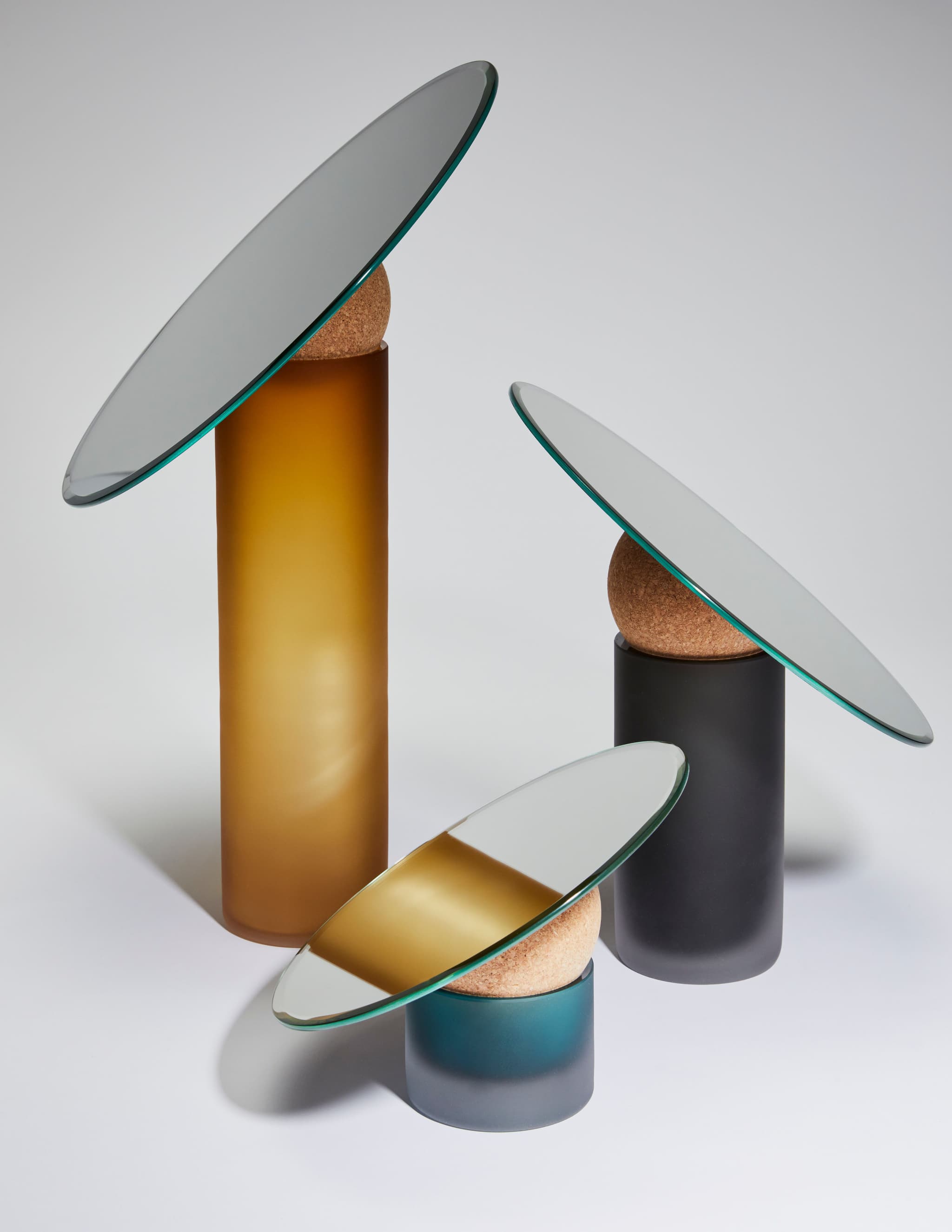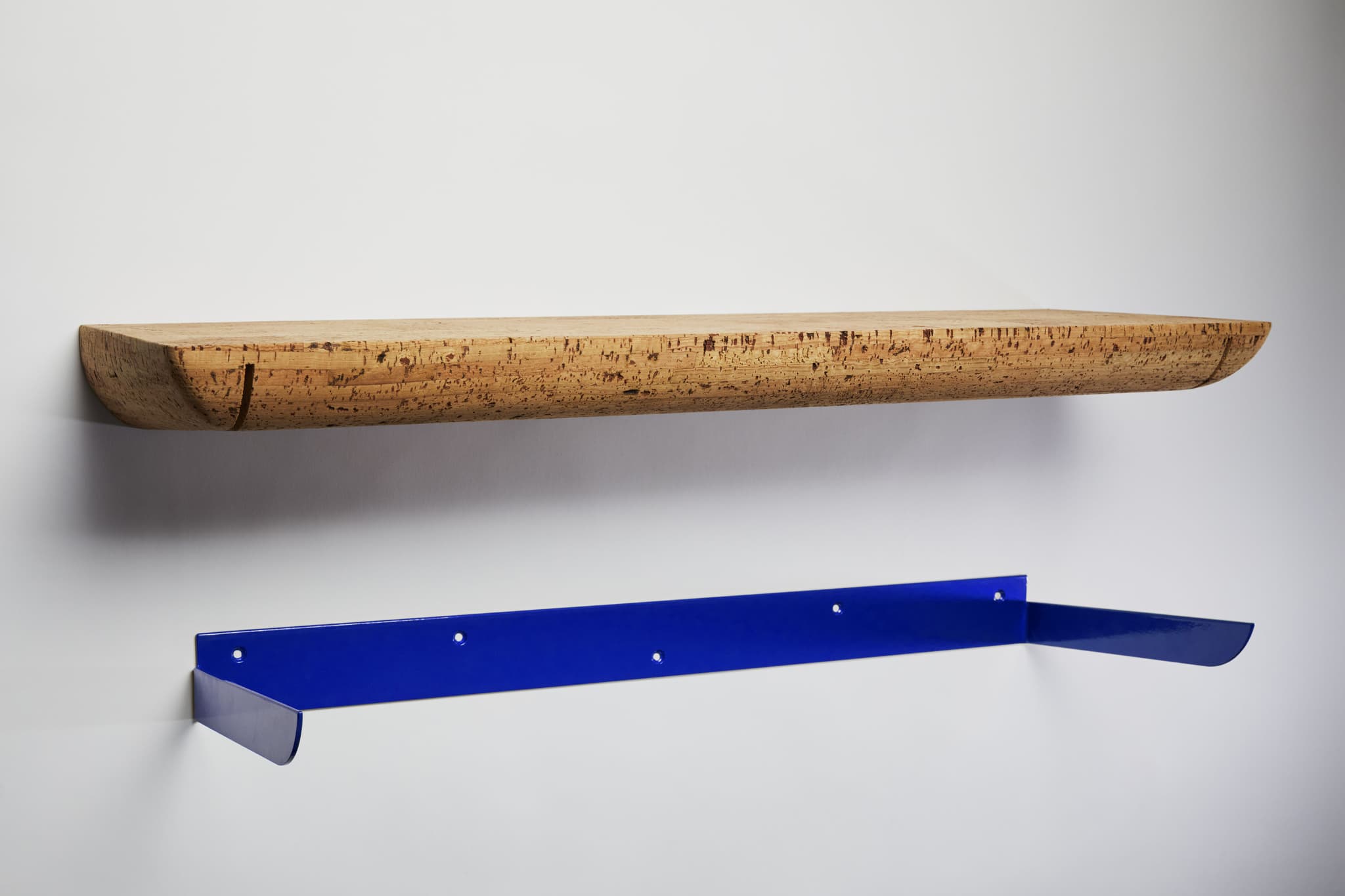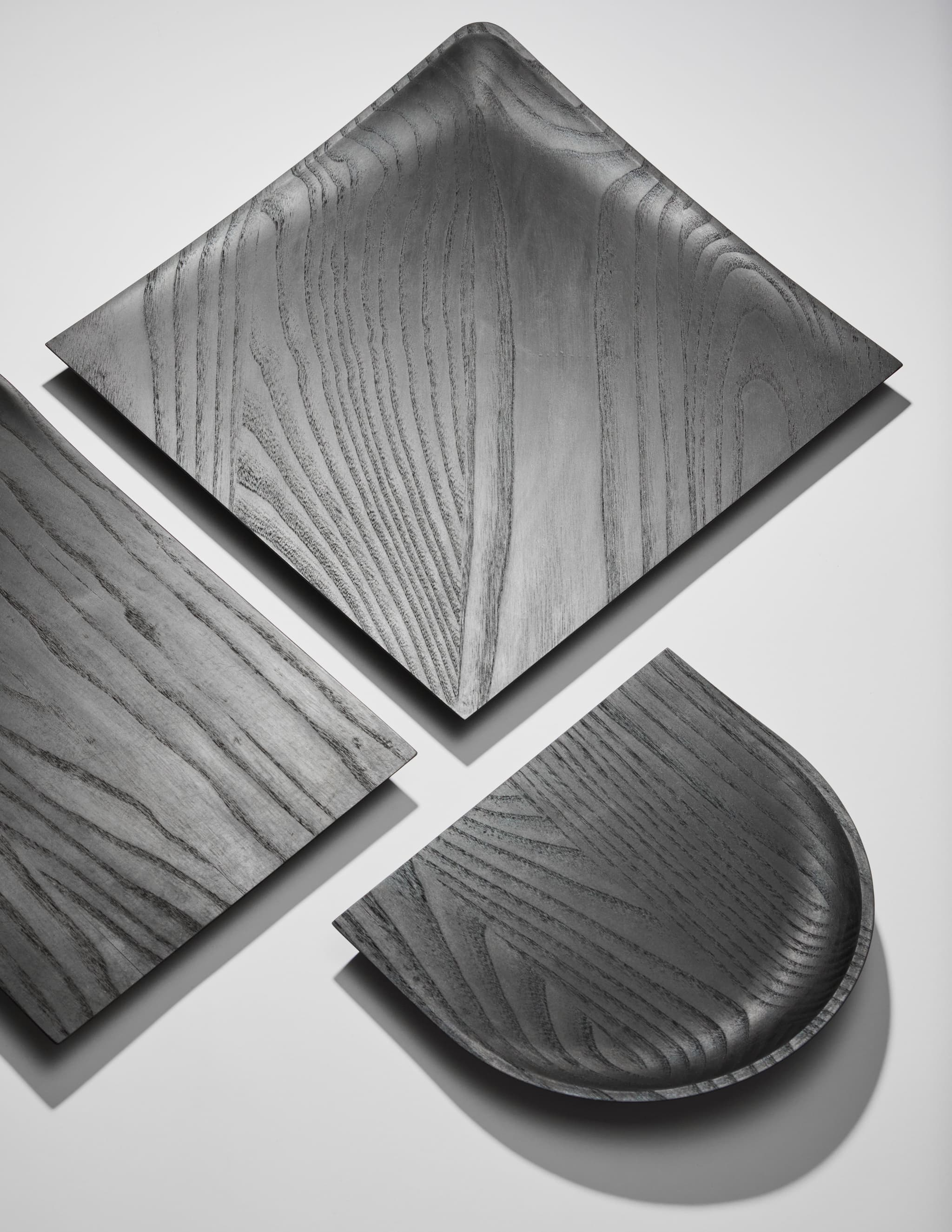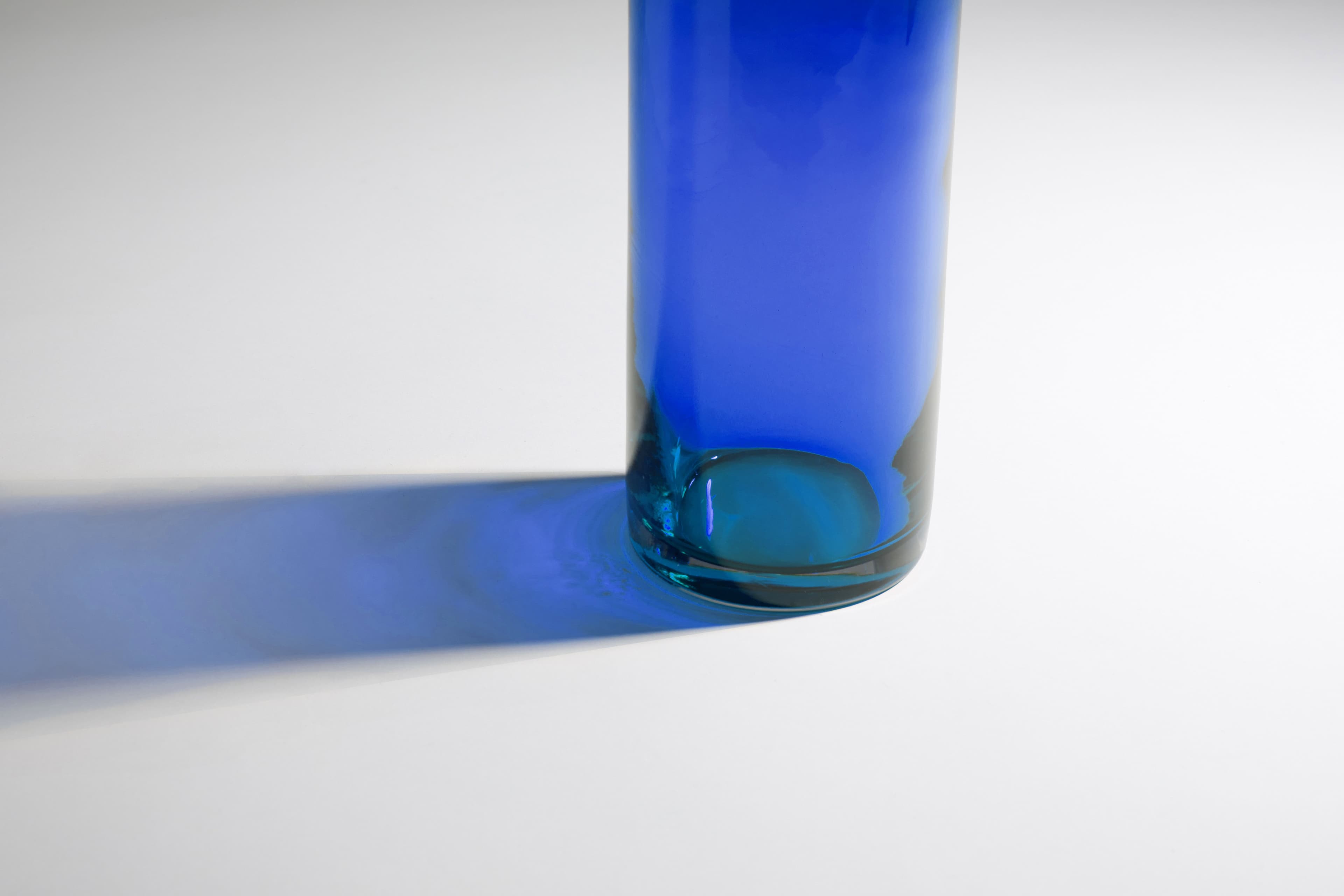Can you elaborate on the specific techniques used in the hand-blowing process for the cobalt blue glass base of the Astra table mirror? How do these techniques enhance the aesthetic and functional qualities of the final product?
The base is hand blown into a custom mould made by the glass blower. The mould is mandatory here to obtain a straight piece, essential to stability when handling the mirror.
During manufacturing, the blower stands on a small platform and blows the molten glass through his blowing cane, a second one, on the ground this time, takes care of opening and closing the mould. The communication between the two is non-verbal due to the blowing, which makes the work even more fascinating and demonstrates a know-how that can only be acquired with a lot of practice and complicity in gestures.
It could have been moulded more industrially, and each of the pieces would have been identical, standardised, but the craftsmanship is more economically suited to small series production. This also produces small variations in thickness, colour, or texture, the print of the artisan in short, which gives all its uniqueness and character to the piece.
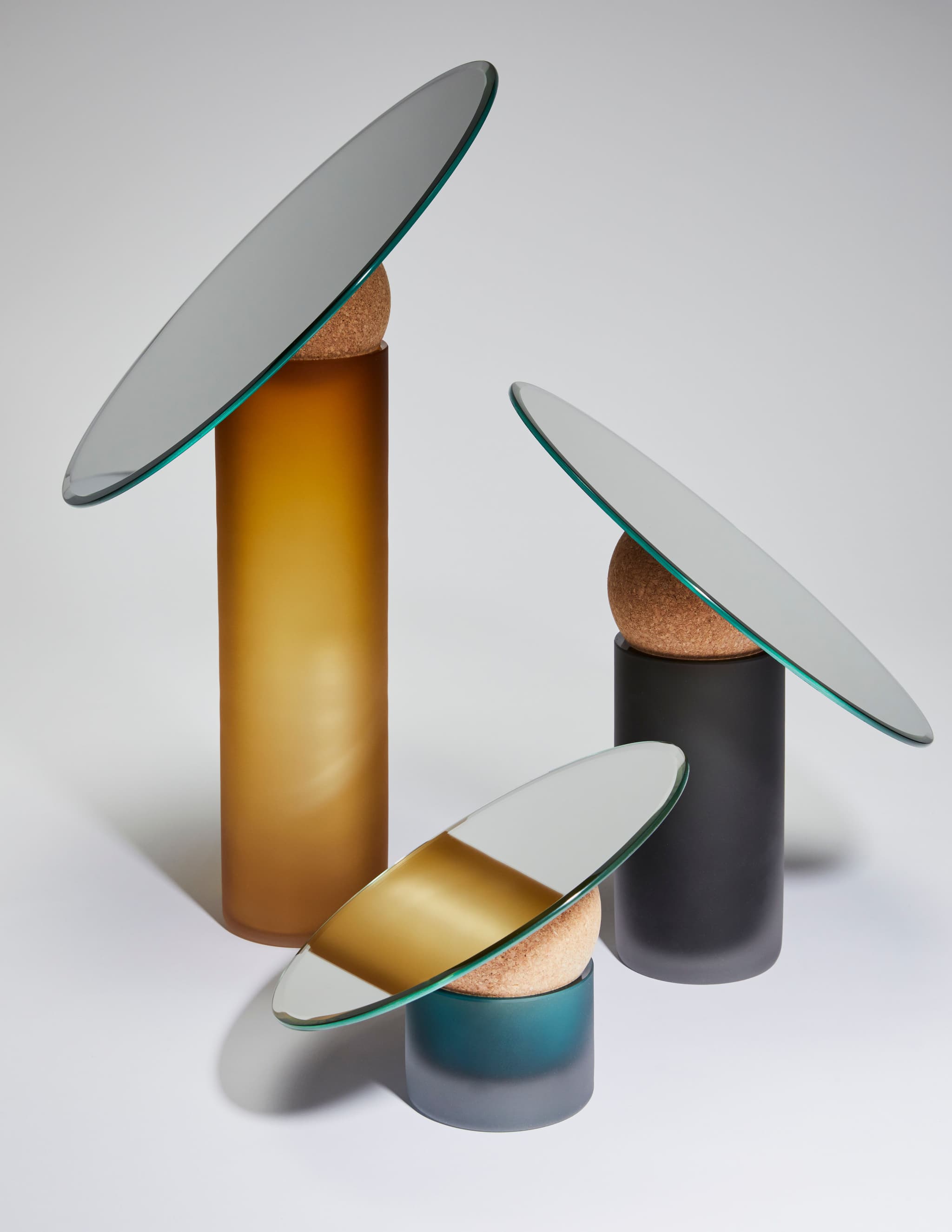
The cork sphere in the Astra table mirrors is both a functional and decorative element. What were the challenges in achieving the precise balance and tilt mechanism, and how did you address them in collaboration with artisans?
The glass base is made by Arcam glass (Simon Muller) in Nantes, the bevelled mirror by Vetro Art in Italy, and the sphere by Corticeria Viking in Portugal, however, we take care of the assembly ourselves.
Thus the work on the sphere was done in a completely empirical manner. Firstly we chose cork rather than wood - which is too smooth, too hard to prevent it from sliding under the weight of the mirror. Then we asked Simon to make a small chamfer on the edge of the glass, this allows for a nice finish and accentuates the adhesion of the two materials.
Truncating the cork sphere requested several tests. In fact, the closer the cut is to the centre, the less amplitude we have in the inclination of the mirror, and the further we move away from it, the more gravity takes effect: the mirror no longer holds its position under its own weight. When we found this happy medium, which suited the 3 mirror sizes, and we were able to create a template to facilitate the machining of the spheres.
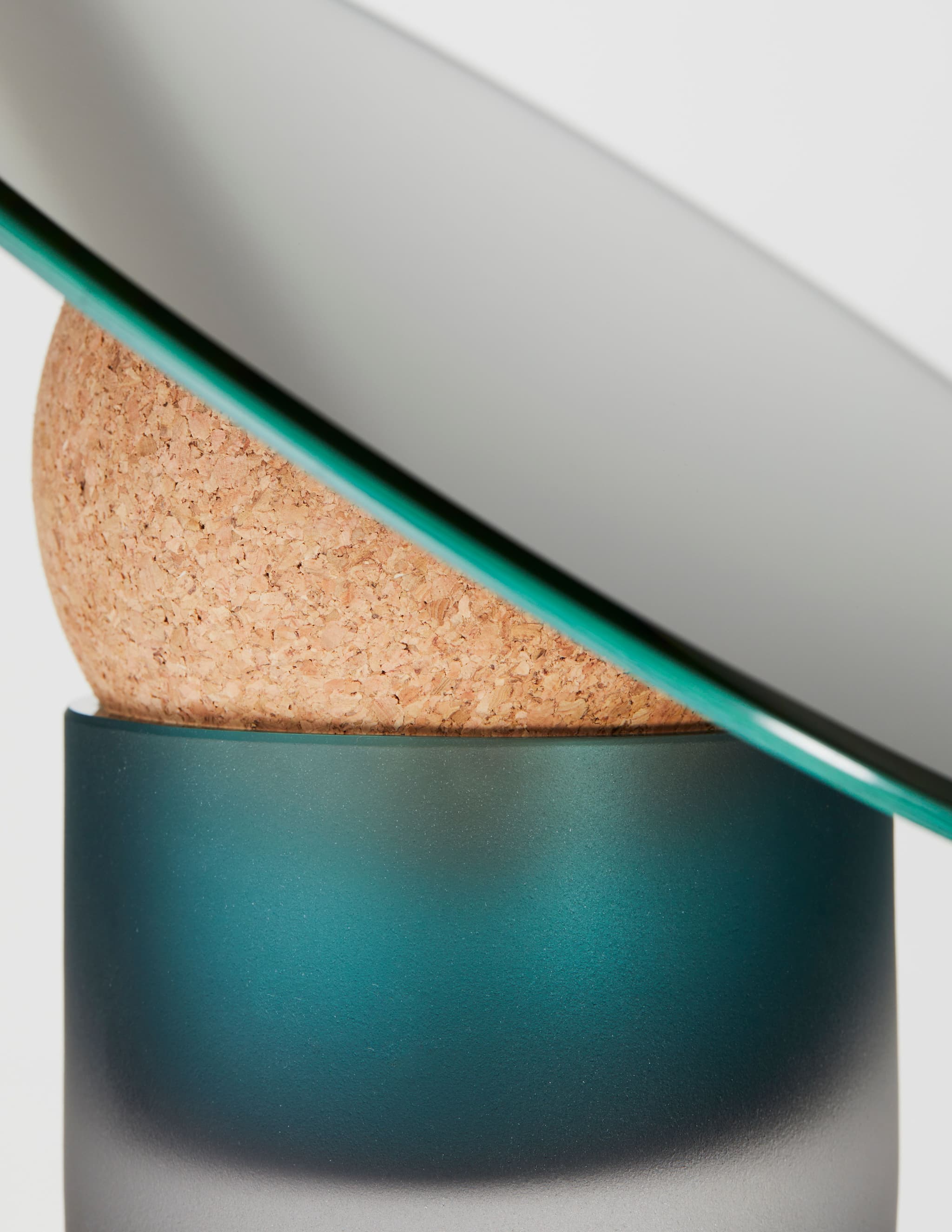
The Mortaise shelves feature an innovative assembly without glue. Could you discuss the engineering and design considerations that went into creating the folded metal frame and its integration with the cork slab?
The initial idea was the possibility of completely recycling the two parts, and for this, no adjuvant (glue, etc.) was needed.
I have always been curious about assembly systems in cabinetmaking or joinery (Japanese ones in particular). They produce very beautiful details on the pieces and are fascinatingly precise. Thus the assembly of cork and metal was inspired by the tenon and mortise in carpentry (hence its name Mortaise). I wanted this detail to be visible, to even become the central point of the design. This is the kind of detail that differentiates it from an ordinary shelf.
The fact that cork is light and easy to machine made it possible to transpose this technique to the manufacture of a shelf. The general shape was not a hindrance to manufacturing; the difficulties were more in the creation of these slots which would receive the metal. These must, in fact, be made at a slight angle to prevent the shelf from sliding forward along the metal structure once placed. This angle also allows the load to be distributed against the wall and not at the edge of the shelf, which makes it more solid.
Everything was constrained by the type of tools available from the manufacturer. The exchange of technical drawings with Cork Units was essential and very rich throughout the development in order to best adapt to their manufacturing constraints and respect the design.

In your work with cork, such as in the Mortaise shelves, what specific properties of cork make it an ideal material for your designs? How do you ensure the sustainability and quality of the cork you use?
The cork offers a large panel of ecological advantages, from its production to its various possibilities for recycling. The cork tree has a long lifetime, around 200 years, and it has an enormous regeneration capacity. It's one of the tree species that absorbs the most CO2 in the atmosphere. So, its production helps in the fight against climate change.
Cork oak forests represent one of the best examples of harmonious interaction between people and nature in the Mediterranean, where almost the entire world's production of cork is found. Hundreds of thousands of people earn their livelihood from the cork forests, while supporting nature. Not a single tree is cut to harvest cork, as the bark is stripped every 9-12 years. It preserves the forest and its ecosystem.
This material also has different qualities in its use. It is waterproof, light (over 50% of its volume is air), resistant (thanks to its honeycomb structure, cork resistance to impact or friction is greater than other hard surfaces), and can be infinitely renewable (recycled as agglomerated cork, for example). It has a soft-touch texture: The natural texture of cork combines softness and flexibility to the touch. It can also be mass-tinted from light brown to black by simply being heated. It avoids the use of polluting dyes.
Cork Units, which produce our Mortaise shelves, are the third generation of a cork family company. The manufacturer works only with natural cork blocks. The natural cork keeps most of its original properties, resulting in products with a low environmental footprint. Also, their forests are FSC certified.

The CONSOLE design contrasts the randomness of black and white ebony with structured black steel. How do you approach selecting and combining these materials to achieve both visual harmony and functional durability?
It was during a meeting with Fabien Ducret, a cabinetmaker in Paris, when I was introduced to black & white ebony for the first time. He wanted to integrate this wood variety into a piece of furniture, so we began our collaboration.
He worked on different “sun” veneers. The natural pattern of the wood is already fascinating, but when placed in this form, it becomes almost hypnotic. I then had to work on a base that would highlight this precious wood, a bit like a ring sets a stone. The two-part metal structure runs along the top and supports the mirror. I wanted to take ebony out of tradition by choosing simple and geometric shapes, yet not completely breaking away, working instead on intersecting rays to highlight the ironworker's craftsmanship. The structure responds to the motif with sobriety but not without complexity.
By adding a round mirror to the piece of furniture, we give it an almost sculptural stature and diversify its uses in different places throughout the house (bedroom, living room, entrance, etc.). This also ensures functional durability.
The furniture becomes a witness to passage: a console, a mirror, a piece of furniture accompanying arrivals and departures. Its light-reflecting mirror and its slender, human-sized frame give it a welcoming presence. A break, a hospitable space on the edge between inside and outside.
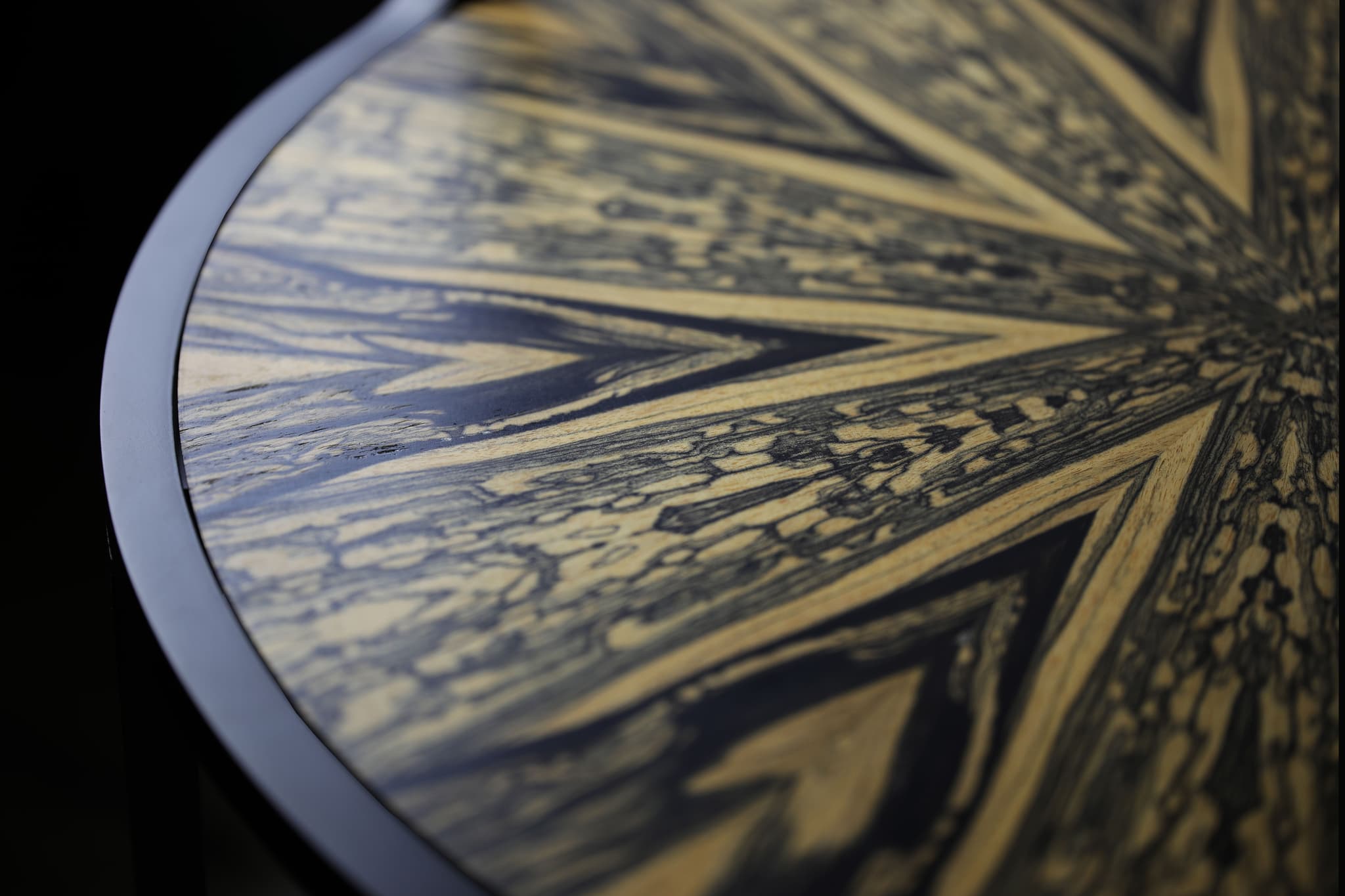
How does the concept of "attachment and material integrity" influence your design decisions and material choices, particularly in ensuring that objects age well and can be passed down?
I believe in the sustainability of natural or at least minimally processed materials. When we look at architecture, materials like glass, stone, earth, metal, or wood often age better than 'ultra-processed' materials like concrete or plastic.
I like materials that age over time - wood turning grey, copper developing a blue patina, the beauty of patina, and corrosion. So, I try to work with materials while maintaining a raw appearance. As if to signify their origins.
The porcelain biscuit in the Geta series, the natural cork of the Mortaise shelves, or the ash wood of the Creux trays - all simply protected by a natural and organic black oil to highlight the wood grain. The use of objects also leaves its own marks over time - those of memories, which give them their sentimental value. An object is passed down because it can endure the ages in terms of use or style, and also because it can show the times it has passed through without deteriorating too much.

Your designs emphasise clean lines, simple shapes, and soft geometry. Can you discuss your process for distilling complex forms into these fundamental shapes while maintaining a unique and compelling design language?
This is the difficulty of formal research work. “Less is more” is easier said than done. I didn't invent the circle or the sphere, everything has already been done!
Sometimes it is the material that will challenge or constrain us, sometimes the function, but in all cases, it requires a lot of research across various fields (art, architecture, artisanal know-how, nature, cooking, etc.). Transposing ideas and comparing references allows one to be creative and imagine new projects.
Then comes the phase of simplifying the drawing: roughing it up, refining it to get to the essential, to support our point as best as possible. Thus, we renew these familiar forms by twisting and moving them from their initial context, making them familiar yet unexpected in a new environment.
